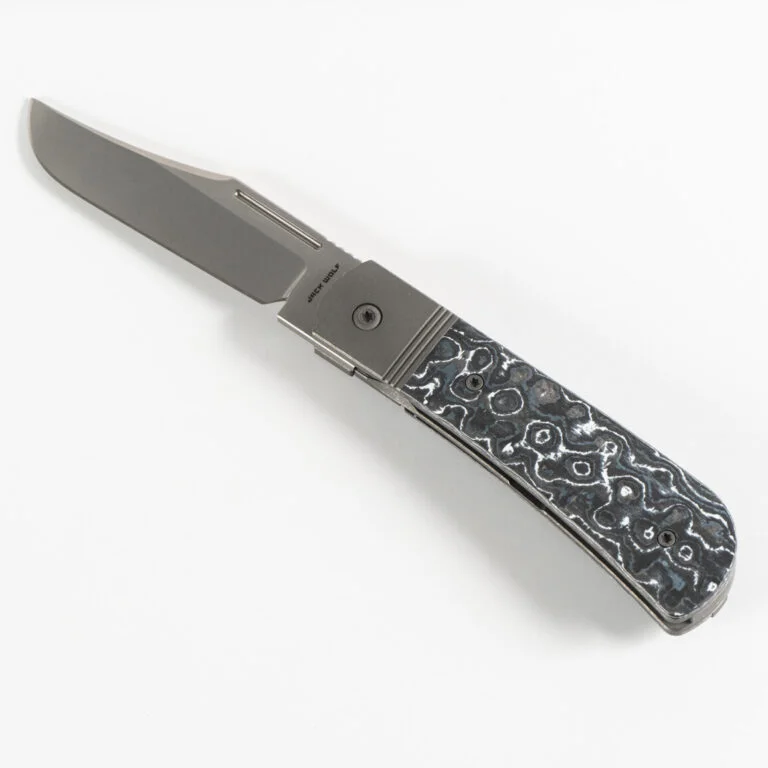iKnife Collector
The online community of knife collectors, A Knife Family Forged in Steel
Stag. Is it bone or antler?
When I see a knife advertised as having a stag handle is it deer bone or antler? I understand when a knife has a bone handle it is probably cow bone. I think I read stag can be either deer bone or antler. Is that correct? If so, how do I know which if it isn't mentioned in the description or preferrable in the model name. Example: Queen torched stag serpentine jack? That is the model quoted from a catalog. Is it antler or bone? Can you tell which by looking at it? I've seen stag antler that is obviously a piece of an antler. But is antler sometimes sanded smooth? Is one considerable more expensive that the other? Is antler hard to come by to use for knife handles? Any help is appreciated.
Jack
Tags:
Replies to This Discussion
-
Permalink Reply by Tobias Gibson on February 9, 2014 at 15:19
-
I would assume that it was a composition material similar to Delrin (thtermoplastic) made to look like jigged bone.
-
In MemoriamPermalink Reply by John McCain on February 9, 2014 at 22:52 -
I would agree with Tobias-The Del part of the name would make me immediately think of Delrin made to look like bone
--
-
Permalink Reply by Tobias Gibson on February 10, 2014 at 12:49
-
As a general rule, if a handle is made of antler, the maker or company will specify that it is Stag or the type of antler that is used. If it is made of cattle bone, the company is going to call it bone. Camel Bone is a common alternative to for knives from South Asia (Pakistan)
When you see the word bone or or stag combined with prefix, suffix, other word, or it usually means it is made to look like a natural product but made from some type of thermoplastic, or other synthetic material
For instance:
Stag-alon (imitation Stag)
Ivorite (imitation Ivory)
Synth-Stone (synthetic or made-made stone)
Ebonite (Wood dyed black to look like ebony)
Abalonerite (Celluloid made to look like Abalone)
Stag-bone or Bone-Stag are both bone that has been burnt and jigged to look like deer antler.
On a side note,
Delrin is a trademark name for a synthetic polyoxymethylene thermoplastic developed by DuPont. Other companies produce similar thermoplastics, (some now using the DuPont's formula) but these companies cannot use the DuPont Trademark. When the synthetic polyoxymethylene or similar thermoplastic is used it often called "Composition." In reality, the composition could be just about any type of plastic. The quality is really dependent on the reputation of the Knife's brand name.
The same can be said for the quality of the bone or stag. There is quality cattle bone and their is crappy cattle bone, just as there is good quality antler. Thus the stag on a knife made in Pakistan may or may not be as good as the stag found on a knife made in America. Furthermore even among knife makers in America you find some use better quality bone, stag, wood, and synthetic materials.
In short, if you know the quality of the brand, then you'll know the quality of the handle material.
-
In MemoriamPermalink Reply by Robert Burris on February 10, 2014 at 14:14 -
There is also more than one kind of stag. There's Elk, Red Stag, Whitetail, European Stag, Sambar Stag, Axis Stag and their maybe others from around the world. The most expensive and most sought after is Sambar Stag.
-
Permalink Reply by Carl Bradshaw on February 10, 2014 at 19:12
-
Great explanation and information Tobias, thanks for posting. And to everyone else as well.
-
In MemoriamPermalink Reply by Doug Webber on August 30, 2015 at 16:55 -
I've heard that Sambar Stag is no longer being imported into the U.S. Any that is being sold is old inventory, and is bring a very high price. With the low prices in the knife market, the cost of Sambar Stag to re-handle a knife is more expensive than what the knife will sell for.
-
Permalink Reply by Carl Bradshaw on August 30, 2015 at 18:43
-
I heard that they are no longer being imported from Asia. However, there are large Sambar deer farms in the southern US states, as well as Australia and New Zealand. So I imagine the stag will still be available, however the supply/demand is going to change making it worth more money than before.
- ‹ Previous
- 1
- 2
- Next ›
White River Knives
Latest Activity
Featureddead_left_knife_guy replied to Kevin D's discussion FOX knives - How many brands have there been? in the group Research & Resources
Featureddead_left_knife_guy replied to Kevin D's discussion FOX knives - How many brands have there been? in the group Research & Resources
© 2025 Created by Jan Carter.
Powered by
![]()
